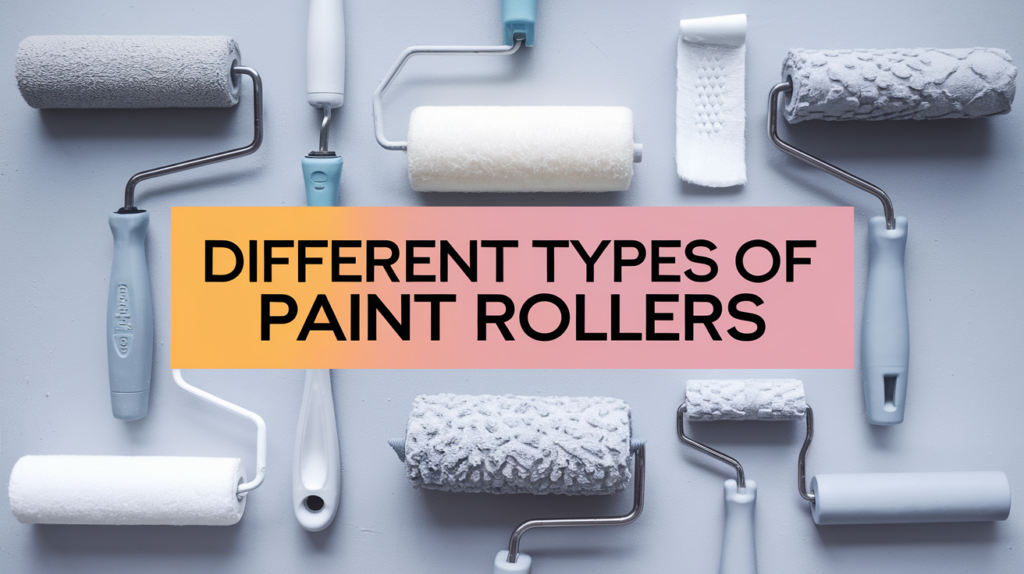Paint rollers make painting easier and faster as they help spread paint evenly over walls and ceilings. Using a good roller gives your home a fresh, clean look.
Picking the right paint roller is important. It speeds up your painting job and helps avoid problems. Good rollers leave surfaces smooth without streaks or drips.
Rollers come in many types and sizes. Some work better for rough surfaces, others for smooth areas. Knowing the differences helps you choose the best one for your project.
Choosing carefully means less mess and better results. With the right paint roller, anyone can paint like a professional. It saves time and effort and gives you a room you’re proud to show off.
Main Types of Paint Rollers
Knowing the different types of paint rollers helps you pick the right one for your painting job. Each roller type has unique benefits for specific tasks around your home.
Choosing the best roller makes painting quicker and easier and gives professional-looking results.
1. Manual Rollers
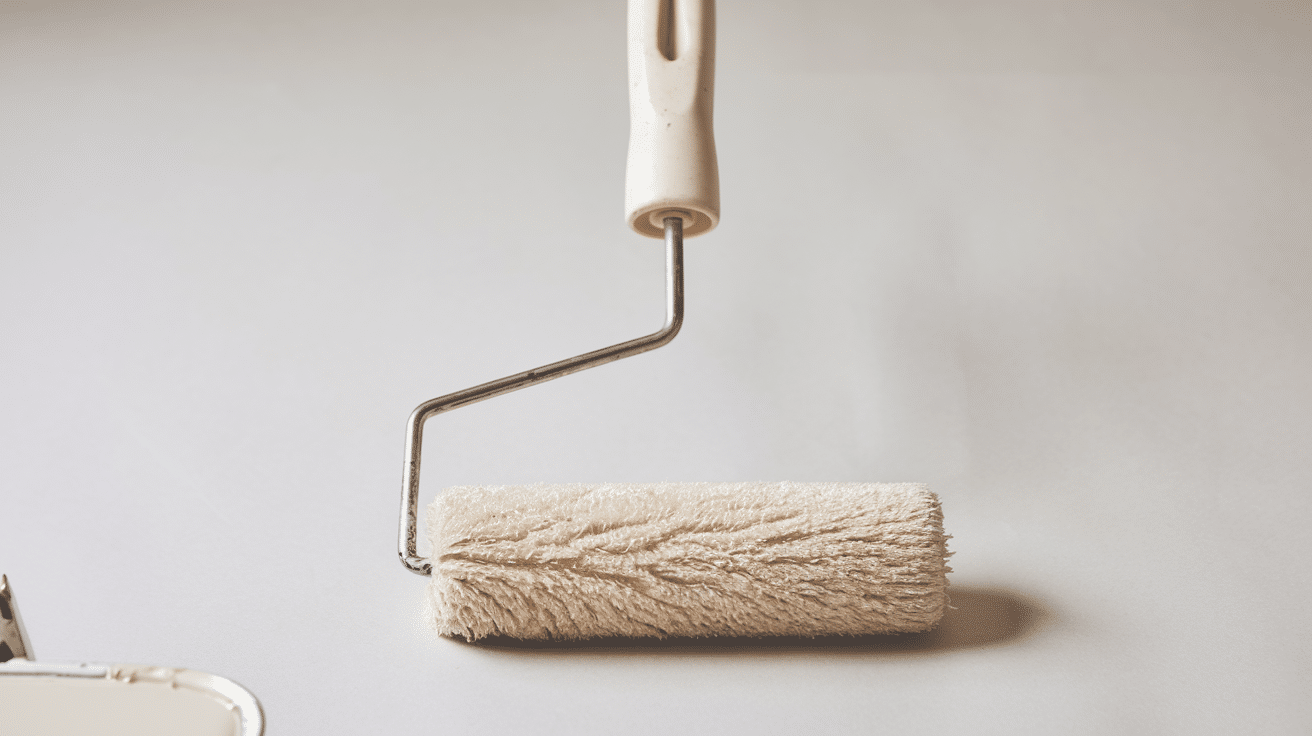
Manual rollers are the most common type used by homeowners. They feature a basic handle attached to a roller cover, making them easy to use by hand.
You can use manual rollers for almost any painting project. They’re great for walls, ceilings, fences, and even large outdoor areas.
These rollers are easy for anyone to handle. Beginners and experienced painters both enjoy them because they’re straightforward.
Manual rollers also don’t cost much, making them budget-friendly. They’re reliable and do the job well, even if you’re new to painting.
2. Pad Rollers
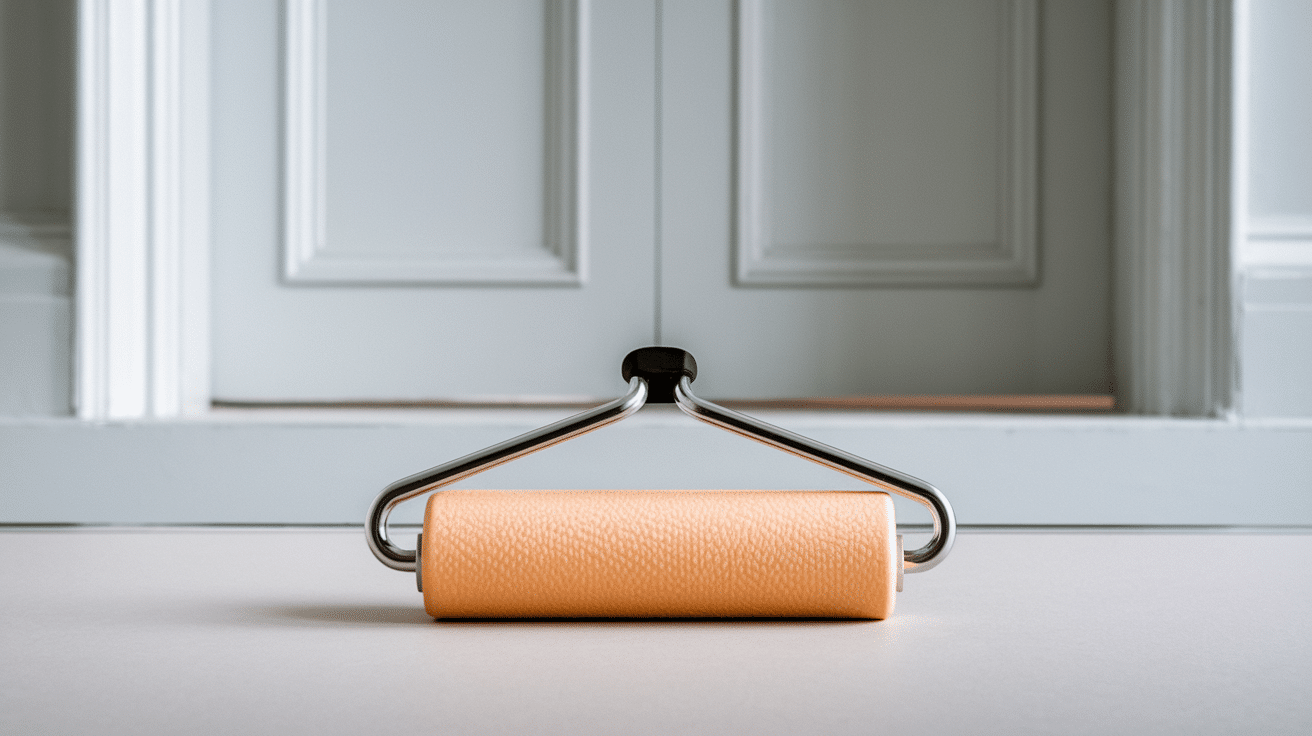
Pad rollers are flat rollers designed for smooth, clean painting. They spread paint evenly, leaving surfaces neat without drips or marks.
They work especially well on smooth surfaces, such as doors, window trims, or baseboards. Their flat shape helps you easily reach edges and corners.
Another advantage of pad rollers is that they prevent messy splatters. They give you more control, making detailed tasks simpler.
If your goal is neat, clean, and smooth paint finishes, pad rollers are an excellent option to choose.
3. Texture Rollers
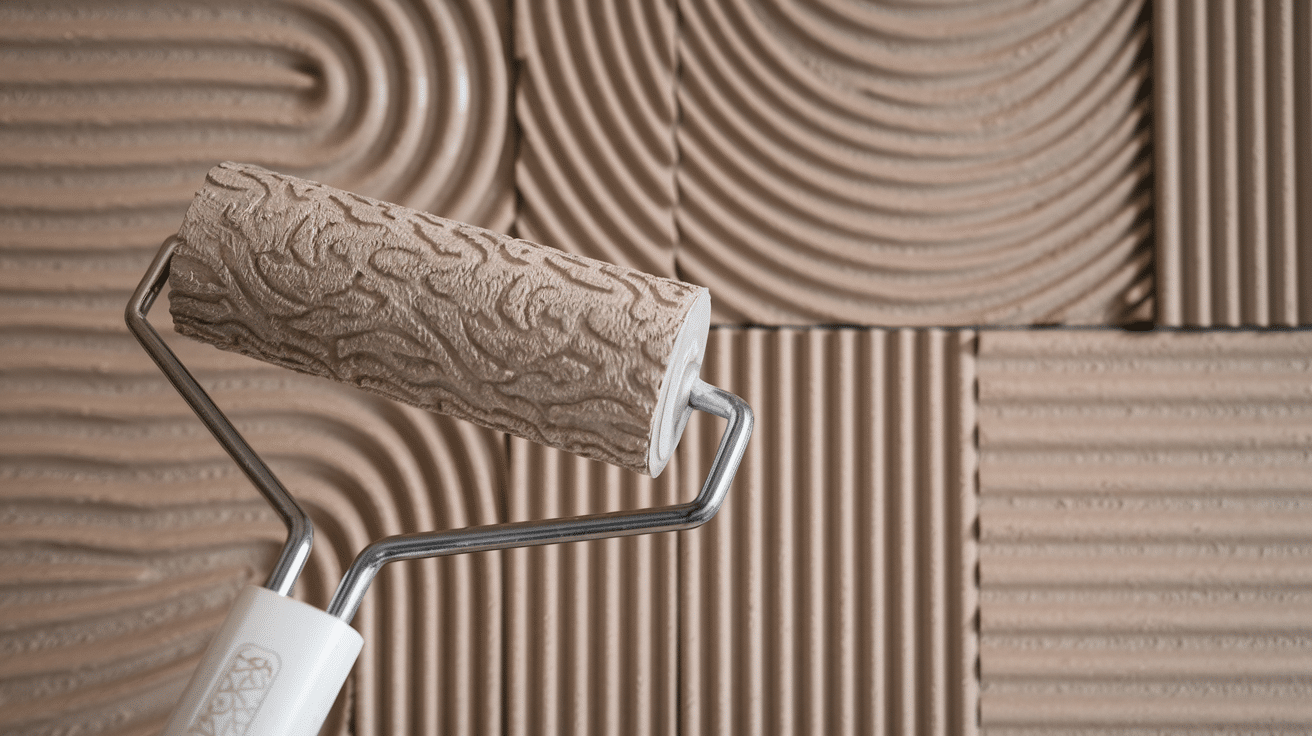
Texture rollers have special designs or patterns on their surface. These rollers allow you to create attractive, textured finishes quickly and easily.
They add creative patterns to walls and ceilings. Using texture rollers lets you decorate your rooms without complicated tools or extra skills.
With texture rollers, you can achieve stylish finishes like stucco or subtle patterns. They’re popular for giving plain walls more personality and warmth.
If you want an interesting wall or ceiling without a lot of extra work, a texture roller is the perfect tool.
4. Mini Hot Dog Rollers
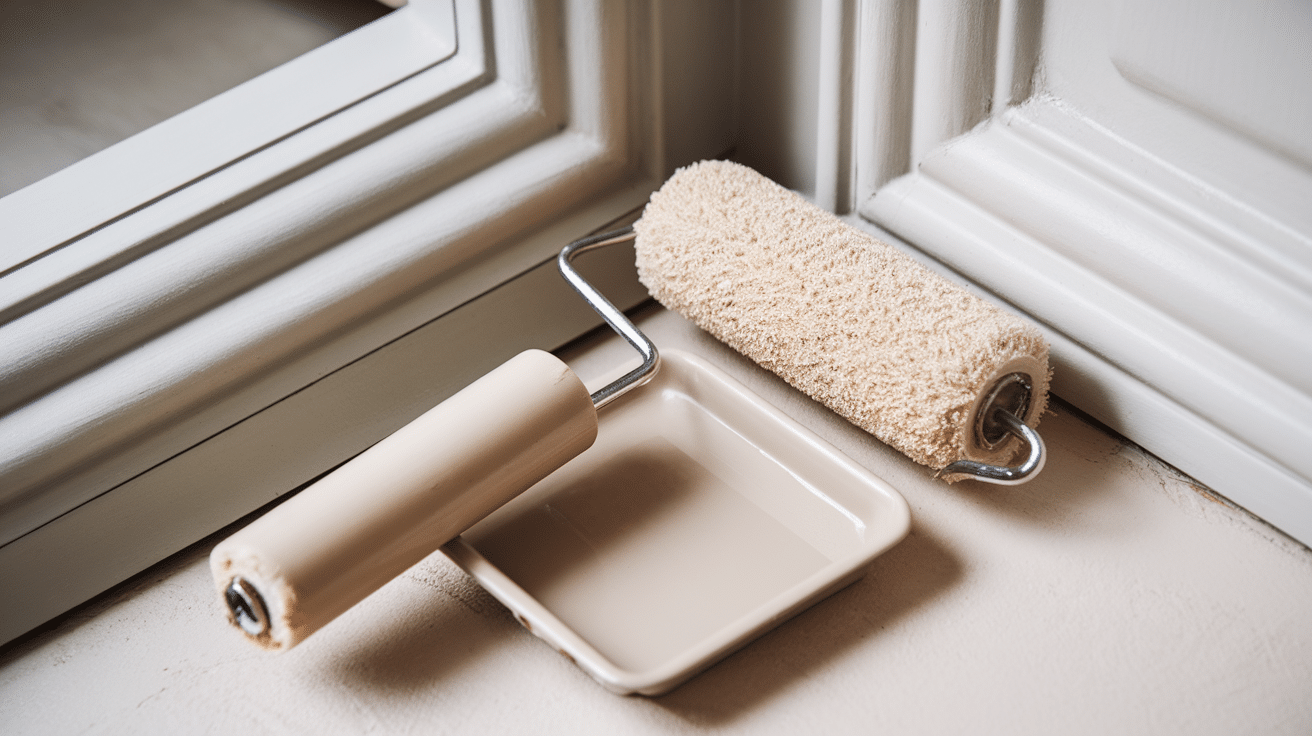
Mini hot dog rollers are small rollers designed for narrow spaces. Their slim shape is perfect for tight spots, trim, or detailed painting jobs.
They’re especially helpful for painting cabinets, furniture, small walls, and narrow areas. They fit into places regular rollers can’t reach.
Because they’re small and light, mini hot dog rollers give you better control. They reduce mess and help you achieve a neat, even finish.
For painting small areas quickly and neatly, these mini rollers are a must-have.
5. Electric Paint Rollers
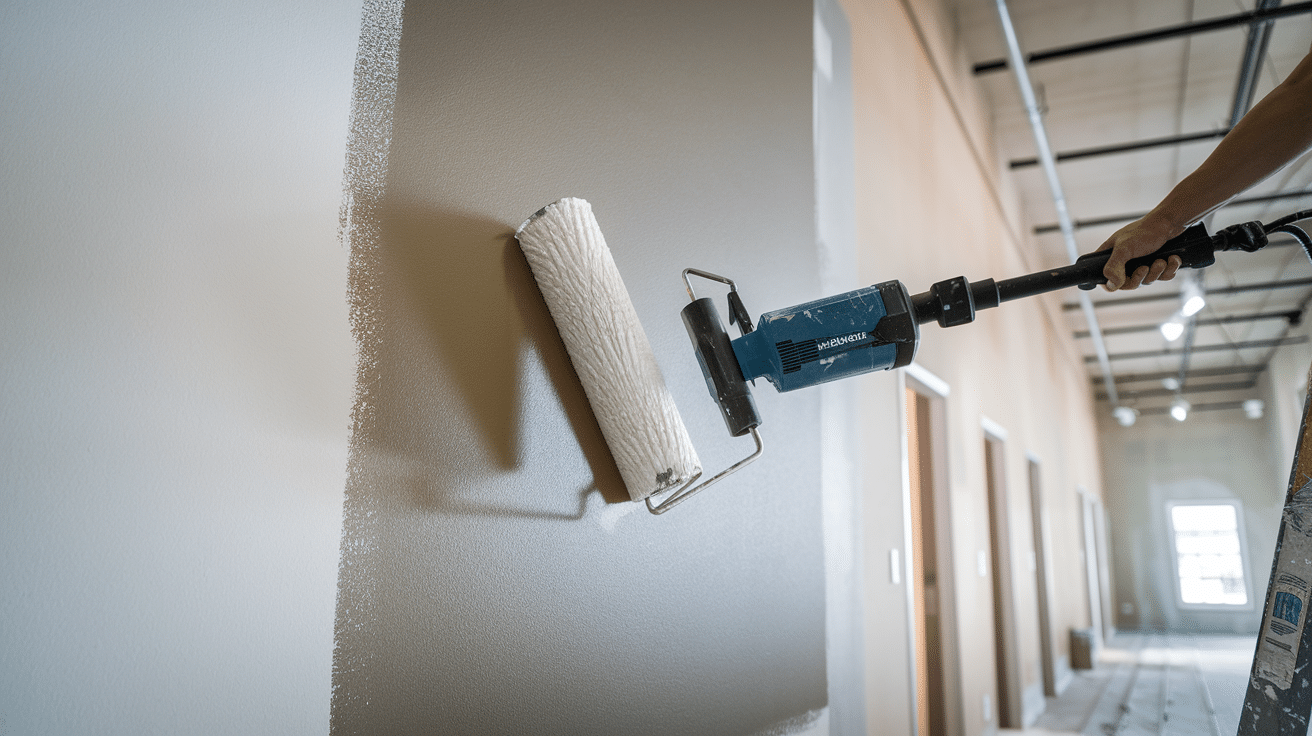
Electric paint rollers run on electricity and automatically supply paint to the roller. They make painting large areas faster and easier.
You don’t need to dip the roller in a tray repeatedly. Instead, paint flows directly from a container into the roller, speeding up your painting job.
Electric rollers are helpful for painting large walls or ceilings. They save you time and effort, especially during bigger projects or home renovations.
While electric rollers cost more than manual rollers, they make painting big areas easier and quicker, making them worth considering.
6. Specialty Rollers
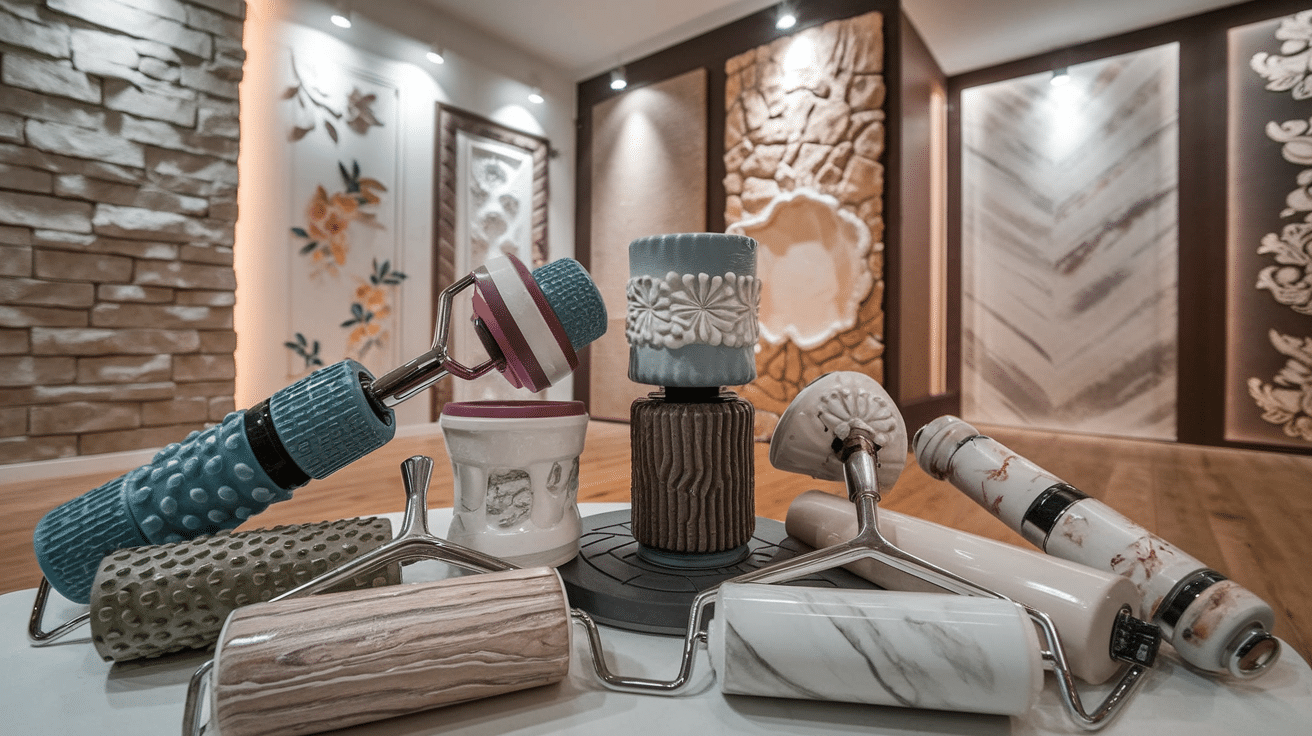
Specialty rollers help you create unique, decorative finishes. They come with special designs for effects like faux painting, sponge painting, or patterned finishes.
Using specialty rollers, you can give your walls artistic, stylish looks without much trouble. They make decorative painting simpler and quicker than doing it by hand.
These rollers are perfect for creative home improvement projects. With specialty rollers, you can easily customize rooms, adding style and interest.
If you want to paint your walls with special effects yourself, specialty rollers are an excellent choice.
7. Corner Paint Rollers
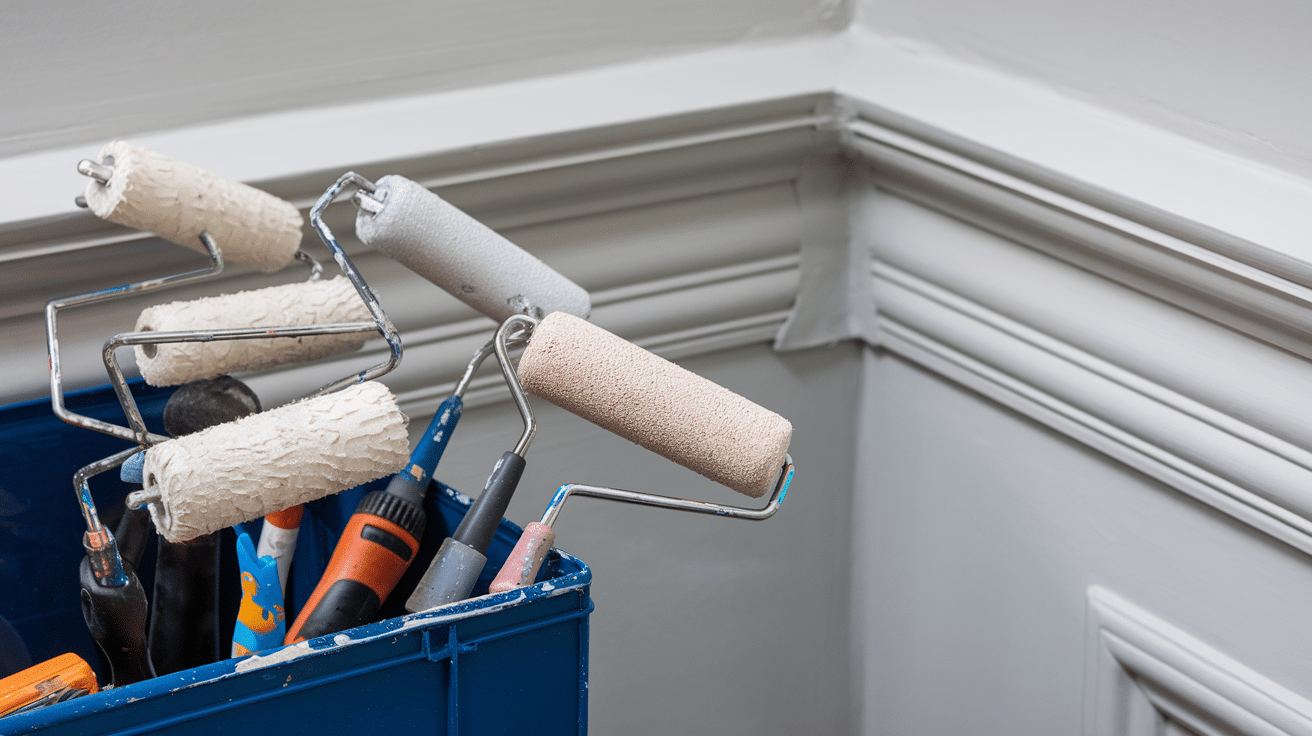
Corner paint rollers are specially shaped rollers that make painting corners and edges easier. Their unique shape helps you reach tight angles neatly.
They prevent you from switching tools when painting corners. You also don’t need extra brushes or tape to achieve neat edges, saving time and effort.
Corner rollers also help you paint tricky spots smoothly and quickly. They provide consistent coverage without leaving noticeable marks or lines.
Using corner rollers speeds up and simplifies detailed painting jobs. They’re perfect for achieving neat, professional-looking results without hassle.
Selecting the Right Roller for Your Project
It is important to pick the correct roller for your project. You need to consider the surface you’re painting and the type of paint you’ll use. Choosing wisely helps you get great results quickly and easily.
Assessing Surface Texture
Before starting, look closely at the surface you’re painting. Check if it’s smooth, slightly rough, or very textured. This helps you pick the right nap length and roller type.
Choose a short nap roller for smooth walls or flat surfaces. It provides even coverage without streaks or lines. Medium nap rollers are good for lightly textured walls. They hold more paint and cover uneven spots neatly.
Rough or very uneven surfaces need long nap rollers. Their thick fibers push paint into deep grooves, saving you time.
Considering Paint Type
The kind of paint you choose affects the roller material you should use. Using the correct roller with your paint type makes the job easier and produces better results.
If you’re using oil-based paints, foam rollers are best. They give you smooth results without leaving bubbles or streaks. Synthetic fiber rollers work well with water-based paints. They absorb paint quickly and spread it smoothly over most surfaces.
Wool or natural fiber rollers are ideal for textured areas. They absorb a lot of paint and apply it evenly, making painting rough walls much simpler.
Additional Tips
Knowing a few extra tips makes painting easier and helps your rollers last longer. Proper care and smart spending mean better results with less effort.
Proper Roller Maintenance
Always clean your roller right after you finish painting. For water-based paints, use soap and warm water, or paint thinner for oil-based paints.
Dry your roller thoroughly before storing it. A clean, dry roller works better next time and lasts longer. Store rollers in a dry, cool place to keep their shape. Proper storage prevents them from getting damaged or misshapen.
Taking care of your roller helps it last for many uses. Good maintenance saves money by reducing the need to buy replacements.
Cost vs. Quality
Cheap rollers can save money at first but may cause problems. They might leave streaks, shed fibers, or need replacing often.
Investing in better-quality rollers usually leads to better results. They last longer, provide smoother coverage, and reduce painting time.
Good rollers hold paint better and spread it evenly. This saves you time and effort during painting projects. Spending a little more on quality rollers often pays off. You get professional-looking results and fewer headaches.
Roller Cover Materials
The roller cover you choose makes a difference in how your painting job looks. Each material has special features that work best with certain paints and surfaces. Knowing these helps you achieve great results quickly.
1. Foam Rollers
Foam rollers provide a smooth, even finish. They’re perfect when you want neat and clean results, without drips or streaks.
They work especially well with oil-based paints. Foam rollers hold the paint evenly, leaving a sleek look behind.
Use foam rollers on flat, smooth surfaces like doors, cabinets, or furniture. They easily handle detailed painting jobs without making a mess.
2. Wool or Natural Fiber Rollers
Wool rollers absorb paint extremely well. Because of this, they hold more paint and help you finish painting faster.
They are perfect for rough or textured surfaces. The thick fibers allow the paint to get into uneven areas easily.
Use wool rollers for surfaces like brick, stucco, or heavily textured walls. They provide good coverage, even in difficult areas.
3. Synthetic Fiber Rollers
Synthetic rollers are durable and long-lasting. They also clean up easily, making them popular for every day painting tasks.
These rollers perform best with water-based paints. They spread the paint evenly, making painting walls simple and quick.
Synthetic fiber rollers work great on surfaces from smooth to moderately textured. They’re ideal for most rooms and basic home painting tasks.
Roller Nap Lengths
Roller nap length means how thick or thin the roller fibers are. The right nap length helps you apply paint evenly and quickly. Choosing wisely ensures professional-looking results.
1. Short Nap – 1/4 Inch
Short nap rollers have thin fibers measuring around 1/4 inch. They work well on very smooth surfaces and leave behind a neat, even finish.
Use short nap rollers for areas like drywall, doors, and flat surfaces. They help prevent drips and streaks for a polished look.
These rollers hold less paint, but they create a clean and smooth result. They’re best for precise, detailed painting projects.
2. Medium Nap – 3/8 to 1/2 Inch
Medium nap rollers are practical, with fibers between 3/8 and 1/2 inches long. They hold a bit more paint and work well on lightly textured or slightly uneven walls.
These rollers provide good coverage for interior walls and ceilings. They spread paint quickly, saving you time and effort.
Medium nap lengths are popular for every day painting tasks. They balance coverage and smoothness well, making painting easier.
3. Long Nap – 3/4 Inch and Above
Long nap rollers feature thick, long fibers of 3/4 inch or longer. They hold plenty of paint and make painting rough surfaces much easier.
They’re great for heavily textured surfaces like stucco, brick, or concrete. Their thickness helps push paint into deeper cracks and grooves.
These rollers speed up painting on uneven walls. They provide complete coverage, helping you achieve good-looking results fast.
Conclusion
Choosing the right paint roller can help you achieve beautiful results easily. Each roller type has special features designed for different painting jobs.
Understanding roller materials and nap lengths makes painting simpler. It ensures paint goes on evenly, quickly, and without mess.
Also, using the right roller with the correct paint type matters. It helps the paint stick better and look smoother. Proper roller care saves money and effort. Regular cleaning and good storage make rollers last longer.
Finally, investing in quality rollers is worth it. They provide professional results, making your home look freshly painted and inviting.
With this knowledge, your painting projects will become faster, easier, and much more enjoyable.
Frequently Asked Questions
What Type of Roller Is Best for Smooth Surfaces?
Short nap rollers (1/4 inch) work best on smooth surfaces like drywall, doors, and cabinets. They leave a neat, smooth finish without drips.
Can I Use a Foam Roller with Water-Based Paint?
Foam rollers are usually best for oil-based paints. Synthetic fiber rollers are better for water-based paints because they spread paint more evenly.
How Do I Choose a Roller for Painting Ceilings?
For ceilings, choose a medium nap roller (3/8 to 1/2 inches). They hold enough paint to cover quickly without excessive dripping.
What’s the Easiest Way to Clean a Paint Roller?
For water-based paints, clean rollers with soap and warm water. For oil-based paints, use paint thinner or mineral spirits. Rinse well and air dry.
Should I Buy Expensive Rollers or Cheaper Ones?
Quality rollers cost more but last longer and give better results. Cheaper rollers may shed fibers or leave streaks, creating more work in the long run.

